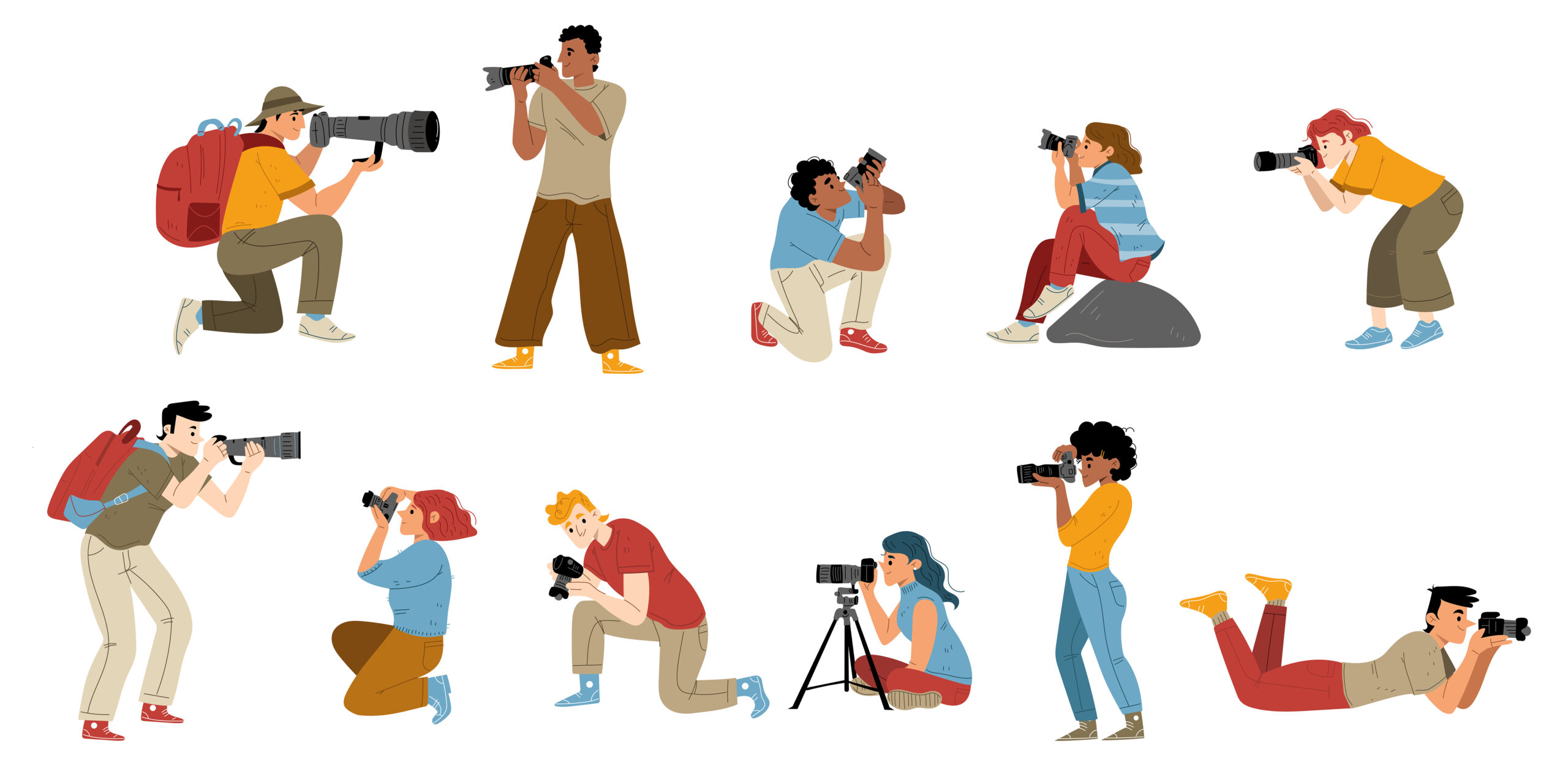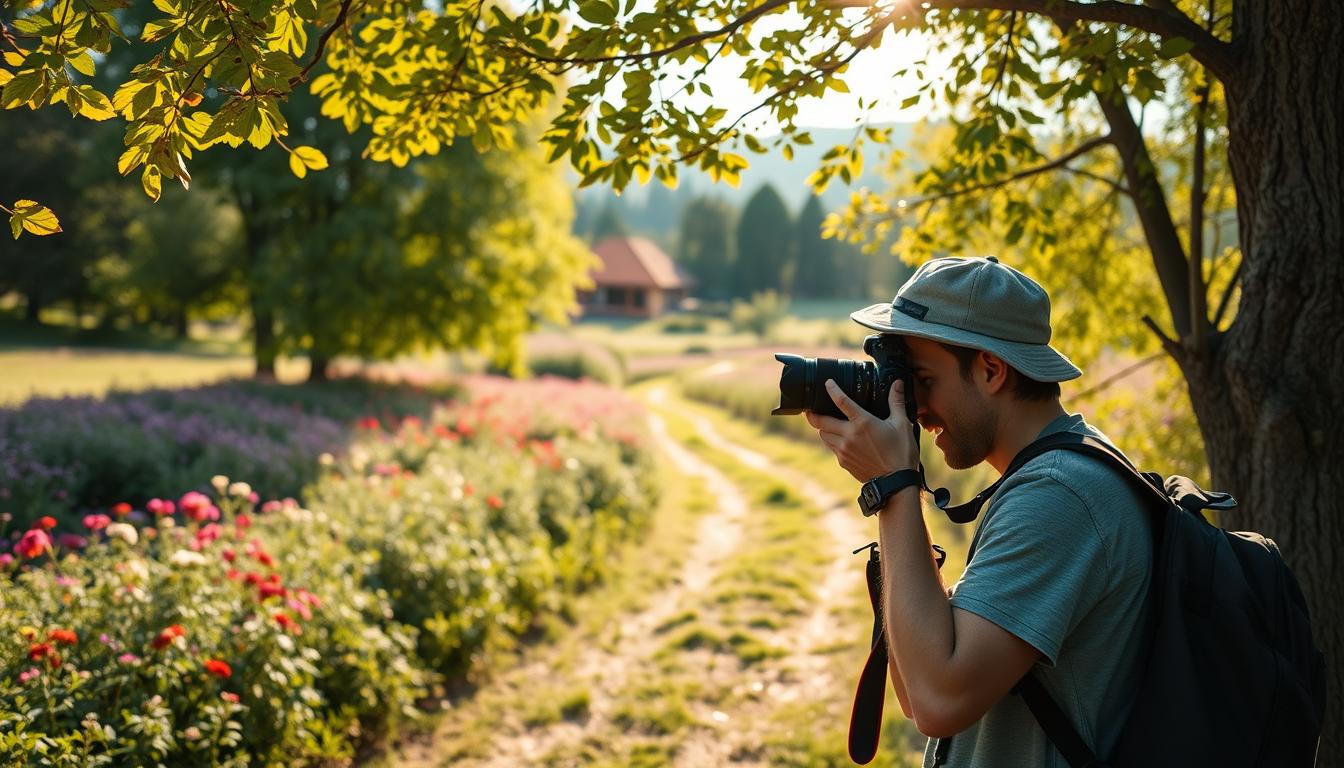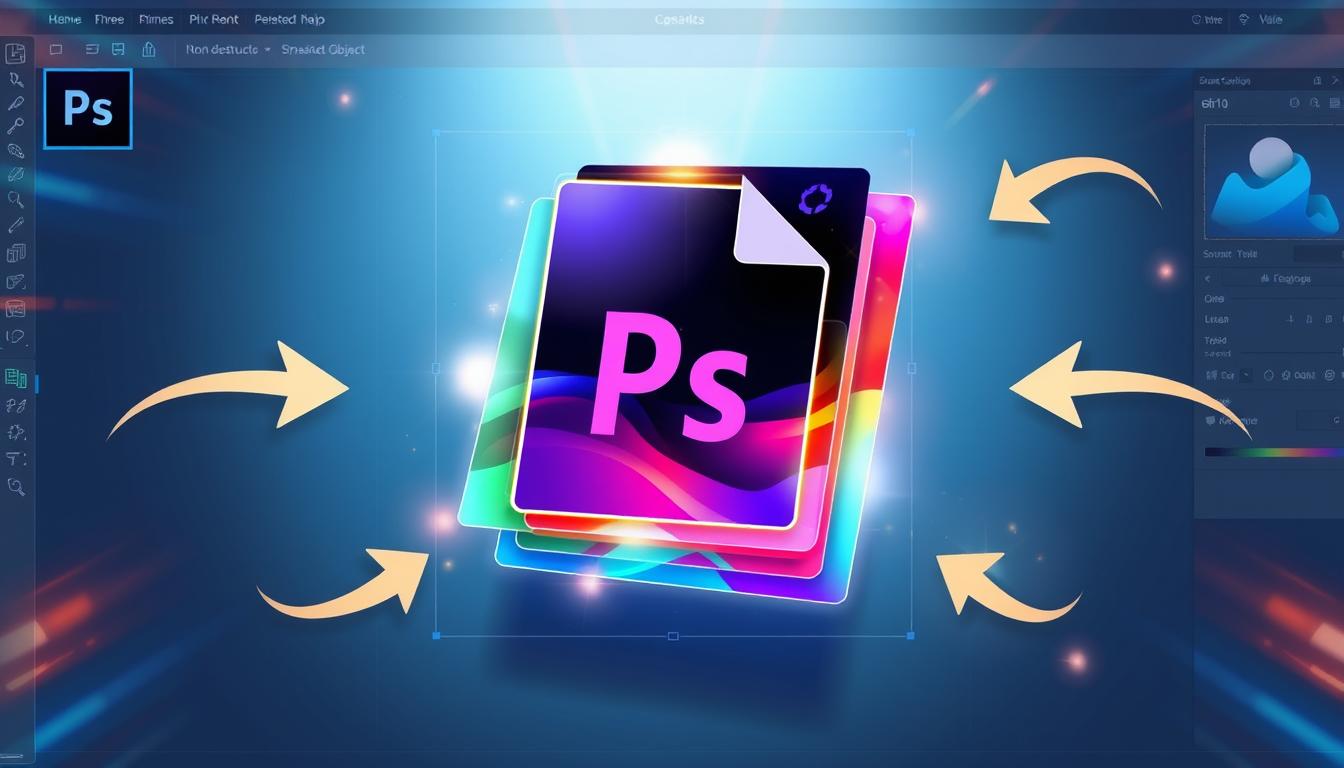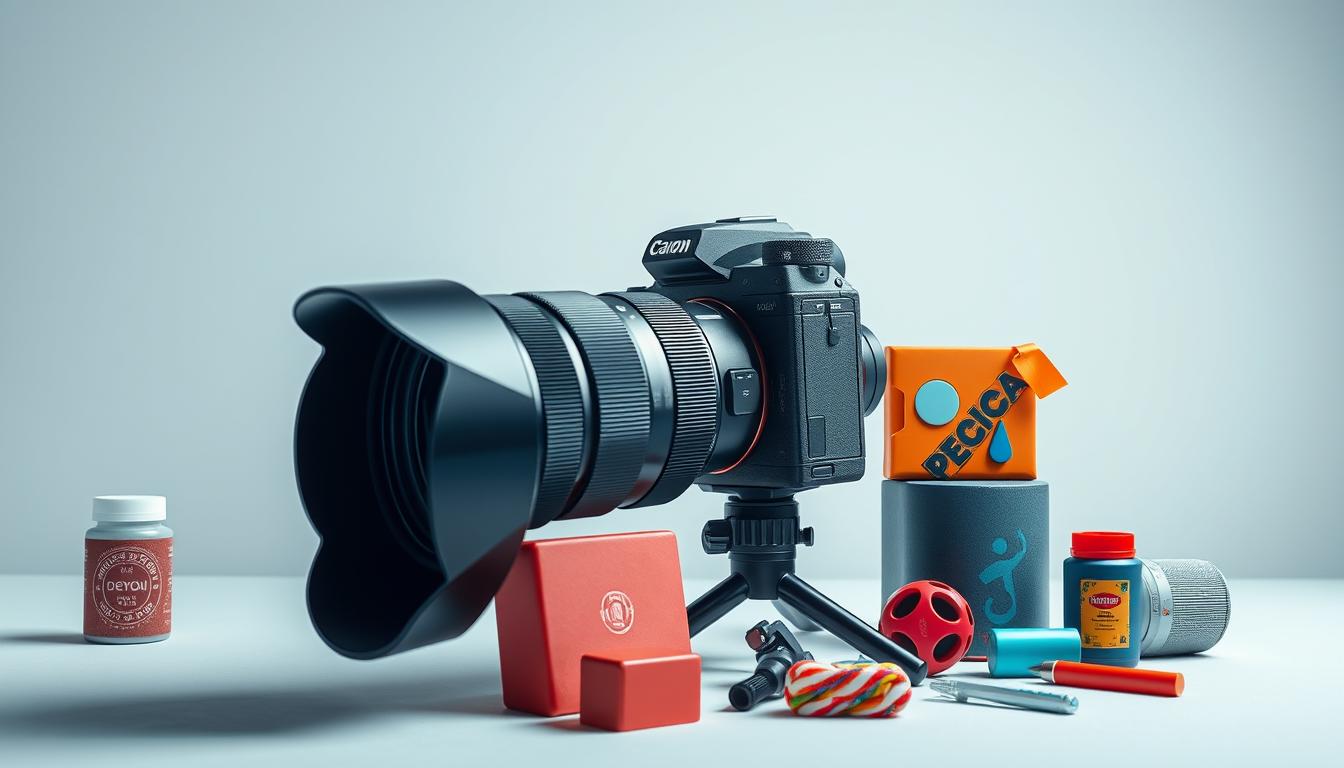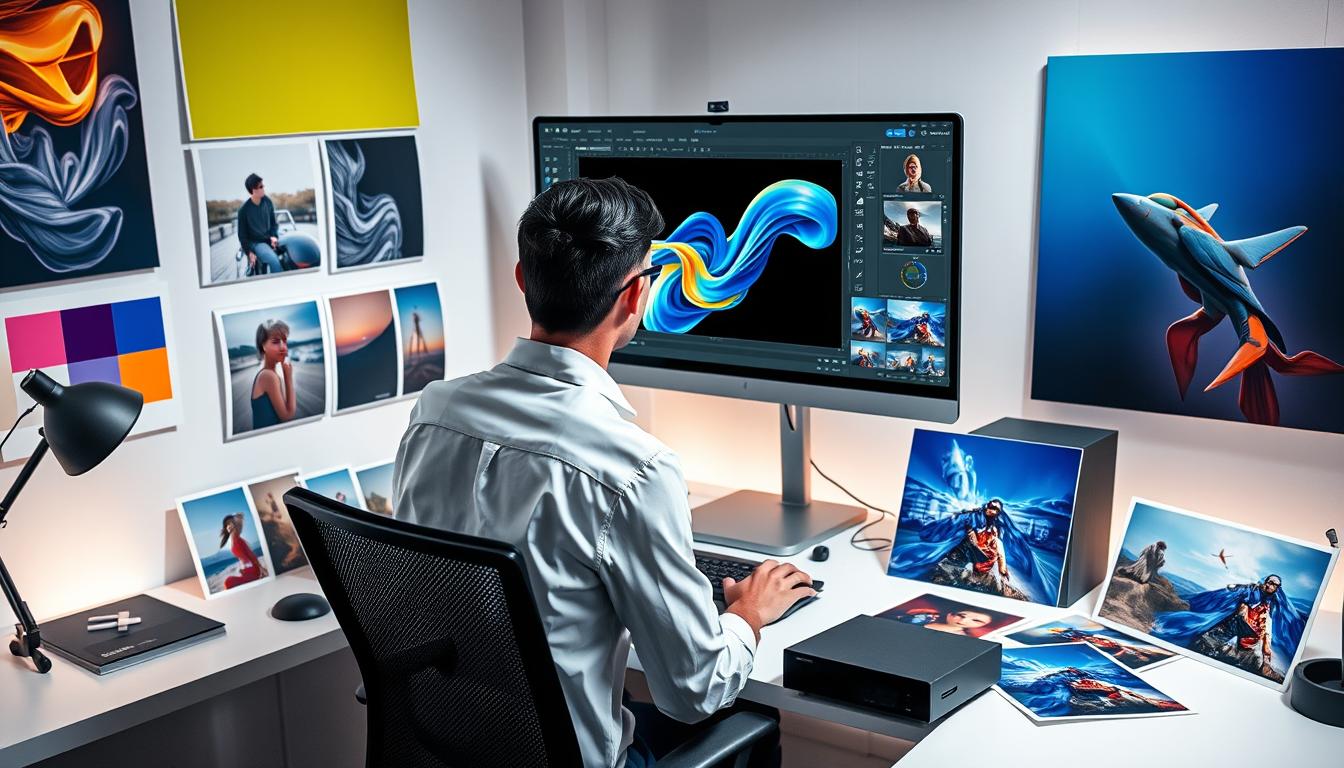Welcome to the world of photography. Here, you can capture stunning landscapes, portraits, or street scenes. It’s a way to bring joy, creative expression, and a new perspective to the world. This guide will help you get started with the basics.
Starting your photography journey opens up endless possibilities. With the right equipment and knowledge, you can improve your skills. It is easier than you would imagine to begin.
Photography is an amazing hobby that can bring joy and fulfillment. By mastering the basics and starting with the right techniques, you can take stunning photos. It’s a way to express your creativity and capture life’s precious moments.
Introduction to Photography
In this guide, we’ll cover the essential photography basics. You’ll learn about understanding your camera and composition techniques. Getting started has never been more accessible.
Why Photography Is an Amazing Hobby
Photography is a hobby that brings many benefits. It lets you express your creativity and connect with others. It’s a way to capture life’s moments and find joy in it.
You can develop both creatively and personally through photography. In this community, you can meet other photographers and pick up new techniques. New acquaintances and relationships can form as a result of this.
Creative Expression and Personal Growth
Photography lets you share your feelings and ideas through pictures. As you get better, you’ll grow personally. You’ll learn to think critically and solve problems.
Social Connections Through Photography
Being part of a photography group can open doors to new friendships. You’ll learn from others and share your photos. This social side of photography is very rewarding.
Potential Career Opportunities
If you love photography, you might turn it into a job. Social media and the need for great photos are growing. This could be a career path for you.
Essential Photography Equipment for Beginners
Starting your photography journey means you need the right camera equipment to take amazing photos. Quality photography gear can really improve your photos. You’ll need a camera, lenses, and a tripod to get started.
First, look into different cameras and what they offer. You can pick from DSLR, mirrorless, or point-and-shoot cameras. Also, get a few key lenses like a prime or zoom lens. And don’t forget a tripod to help take sharper photos.
Other important photography gear includes a camera bag, memory cards, and a remote shutter release. These might seem small, but they’re crucial for a good photography experience. With the right camera equipment and photography gear, you’ll be ready to take stunning photos.
- Camera body and lenses
- Tripod and remote shutter release
- Camera bag and memory cards
Remember, great photography is about more than just the gear. It’s also about your creativity and technique. With practice and patience, you’ll soon be taking incredible photos. Your investment in quality photography gear will be worth it.
Understanding Different Types of Cameras
Photography cameras come in many types, making it hard to choose. A thorough understanding of the distinctions is essential for making an informed choice. Think about your budget, what you like, and what you’ll be shooting.
There are DSLR, mirrorless, point-and-shoot, and smartphone cameras. Each has its own strengths and weaknesses. For example, DSLR cameras give great image quality and control. Mirrorless cameras are smaller and faster.
DSLR vs. Mirrorless Cameras
DSLR and mirrorless cameras are favorites among photographers. DSLR cameras use a mirror and prism to see the scene. Mirrorless cameras use an electronic viewfinder and are smaller, perfect for travel.
Point-and-Shoot Options
Point-and-shoot cameras are small and simple to use. They’re great for everyday photos because they have automatic settings. They might not have as much control as DSLR or mirrorless, but they’re perfect for quick shots.
Smartphone Photography Capabilities
Smartphone cameras have improved a lot. They can take great photos and have cool features like portrait mode. They’re not a full replacement for other cameras but are handy for quick photos.
Your needs and preferences should guide your decision when selecting a camera. You may choose and start capturing great images after you know about the different kinds.
Basic Camera Settings You Need to Master
Getting into photography requires familiarity with the controls of your camera. If you want to take great images, you need to know the basics. These abilities will be automatic after some practice.
Camera settings include aperture, shutter speed, and ISO. These elements control light, depth, and mood in your photos. Adjusting them lets you achieve the look you want.
Aperture and Depth of Field
Aperture is the camera’s lens opening. It lets more or less light in. This setting also changes the depth of field, affecting what’s in focus.
Shutter Speed Fundamentals
How fast a camera can open and close its shutter is called its shutter speed. Slower speeds distort motion, whereas faster ones stop it in its tracks. This will make your images more artistic.
ISO and Light Sensitivity
ISO is the camera’s light sensitivity. Lower ISOs are for bright light, while higher ones are for dark. Mastering these settings lets you shoot in any light.
How to Get Into Photography: First Steps
Starting photography is an exciting journey. As a beginner, it’s key to start with confidence and know the basics. Photography for beginners needs patience, practice, and a willingness to learn from mistakes. It’s important to set up your camera right and understand the basic settings.
Here are some tips to help you start with photography for beginners:
- Learn how to use all of your camera’s features.
- Practice using different apertures, shutter speeds, and ISO settings
- Experiment with various genres, such as landscape, portrait, or street photography
Keep in mind that it’s normal to make mistakes when you begin your photographic career. Actually, blunders can serve as great educational opportunities. Get out of your comfort zone and try new things; you never know what might work. Your skills and the quality of your images will greatly increase as you put in the time and effort.
Take into account the following to hone your photographic abilities:
- Take online courses or workshops to learn from experienced photographers
- Join a photography community or club to connect with other enthusiasts
- Read books and articles on photography techniques and best practices
By following these tips and practicing, you’ll become a skilled photographer. Starting photography is just the beginning. With persistence and passion, you can make your hobby a lifelong passion.
Composition Techniques That Make Photos Pop
Photography composition is key to making photos stand out. By using certain techniques, you can add depth and emotion to your images. The way you arrange visual elements in the frame is crucial.
Some essential photography composition techniques include:
- Rule of Thirds: Divide the image into thirds both horizontally and vertically, and place important elements along these lines or at their intersections.
- Leading Lines: Look for lines, shapes, or forms that can lead the viewer’s eye to the subject or point of interest.
- Framing and Perspective: Use natural or man-made features to frame your subject, and experiment with different perspectives to add depth and interest.
Mastering these techniques can elevate your photos. Remember, practice is key. Keep experimenting to find your unique style.
Exploring photography will reveal more techniques to improve your skills. The most important thing is to keep practicing and enjoying the process.
Light and Its Impact on Your Photos
In photography, light in photography is key. It can turn a simple scene into something magical. Knowing how to handle different lighting is crucial for the look you want in your photos.
Natural and artificial light are the two most common kinds. Natural light comes from the sun, while artificial light is made by humans, like lamps and LEDs. Both can make amazing photos, but you need to approach them differently. Natural light is soft and warm, while artificial light can be harsh and cool.
Here are some tips for working with photography lighting:
- Use the golden hour, just before sunset, for warm and soft natural light.
- Experiment with artificial light sources, such as flashes and LEDs, to create unique effects.
- Pay attention to the direction and intensity of the light to create depth and interest in your photos.
By mastering light in photography, you can elevate your photos. You’ll create stunning images that show the beauty of the world.
Popular Photography Genres to Explore
As you start exploring photography, you’ll find many genres to choose from. Each genre has its own style and interest. Finding your niche and improving your skills is easier when you know the basics of each.
Some popular photography genres include:
Landscape Photography
: Capturing the beauty of nature, from sweeping vistas to intimate details.Portrait Photography
: Focusing on people, telling their stories, and conveying emotions through images.Street Photography
: Documenting everyday life, revealing the beauty in mundane moments, and showcasing urban culture.
These genres are a great place to start. Remember, mastering photography takes practice and patience. Try different genres to find what you love.
Exploring different types of photography helps you grow as a photographer. It lets you develop your unique style and voice. So, don’t be afraid to try new things and explore your creativity.
| Photography Genre | Description |
|---|---|
| Landscape | Capturing natural scenery |
| Portrait | Focusing on people and emotions |
| Street | Documenting everyday life |
Conclusion
As you keep going on your photography journey, remember there’s always more to learn. Whether you want to make a career out of it or just enjoy it, the key is to keep pushing yourself. Always aim to get better and enjoy the journey.
Get plenty of practice in, branch out, and learn from the experiences of others. Get involved in online communities, attend seminars, or enrol in courses to expand your knowledge. As a photographer, you will benefit from this.
Photography is special because it lets you see the world in new and meaningful ways. So, keep exploring, creating, and finding joy in telling stories with pictures. Your photography journey is just starting, and the possibilities are endless.
FAQ
What advantages does photography offer as a pastime?
Photography is a great hobby that lets you express yourself creatively. It helps you grow personally and connect with others. You can also explore a career in photography if you want.
What essential photography equipment do I need to get started?
To start, you’ll need a camera, lenses, a tripod, and more. The right gear depends on your budget and what kind of photography you like.
What are the different types of cameras I should consider?
There are many cameras to choose from, like DSLR, mirrorless, and smartphone cameras. Think about what you need, your budget, and what you like when picking a camera.
What are the essential camera settings I need to master?
Understanding aperture, shutter speed, and ISO is key. These settings help you control the photo’s look, from depth to light sensitivity.
How do I get started with photography as a beginner?
Start by setting up your camera and practicing. Learn about composition, like the rule of thirds. Don’t worry about mistakes – they’re part of learning.
What are some popular photography genres to explore?
Landscape, portrait, and street photography are popular. Each has its own challenges and rewards. Try different styles to find what excites you most.
How can I continue to improve and grow as a photographer?
To get better, keep practicing and trying new things. Get feedback from others and take classes or join clubs. Online resources can also help you learn more.

